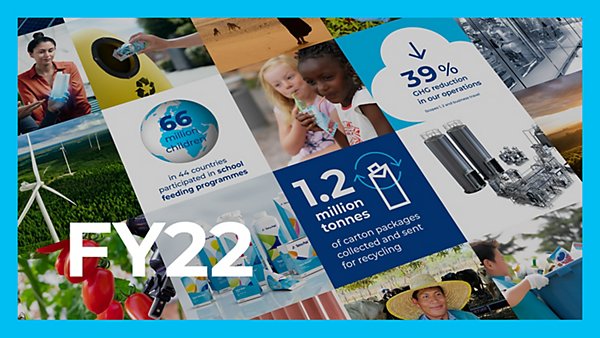The challenge
Biodiversity loss has a devastating impact on our ecosystem, which we all count on for clean air, fresh water, food, and resources. The rate of species extinction is accelerating – every day 137 wildlife species are lost, driven largely by the clearing of forests for agriculture1.
It is time to act. Protection and restoration of nature will be essential to halting and reversing biodiversity loss and reducing greenhouse gas (GHG) emissions2,3. That is why we need to work together to restore ecosystems while producing food.
How we can contribute
Certified & controlled sources
As part of our ambition towards fully renewable packaging, we are continuously exploring sustainable alternatives that shift us from high-carbon, fossil-based materials to low-carbon, renewable and responsibly sourced materials.
In our carton packages, all paperboard and plant-based polymers come from certified and other controlled sources – with our plant-based portfolio growing every year. To support responsible sourcing practices, we work with third-party certification standards such as Forest Stewardship CouncilTM4, Bonsucro5, RSB (Roundtable on Sustainable Biomaterials), ASI (Aluminium Stewardship Initiative) and ISCC PLUS. These third-party standards help us to conserve and restore biodiversity, mitigate and adapt to climate change, contribute to global water resilience, and restore nature.6
We are also collaborators within the Ellen MacArthur Foundation’s CE100 network to drive up the use and reuse of renewable materials for a low carbon future to reduce pressure on natural ecosystems.
Land Restoration Programme
The Araucaria Conservation Programme is the carton industry’s first nature-based initiative focused on restoring degraded rural land of the Atlantic Forest in Brazil. It uses native species, to restore up to 7,000 hectares by 2030 for the benefit of local communities, as well as flora and fauna in the region.
Learn more about the Land Restoration Programme
Supporting suppliers to preserve nature
We promote responsible sourcing practices across our suppliers around the world.
Our initiative "Join us in protecting the planet" strives towards a 50% reduction in emissions from base material suppliers by 2030, compared to 2019 levels, and focuses on addressing the challenges of climate, biodiversity, and circularity.
As a signatory to the UN Global Compact, responsible sourcing is a strategic objective for us and our supply chain. By sharing best practices, setting ambitious targets, and continually reviewing progress, we encourage our suppliers to drive these behaviours in their value chains.
Read more about responsible sourcing
Water-secure9 world
We take a value chain approach to reduce water-related impacts of our packaging and processing solutions on local water resources. We contribute to solving shared water challenges in basins at risk10.
As a member of the Alliance for Water Stewardship, we cooperate to adopt and promote a universal framework for the sustainable use of water. Read more about how we are working together on a global scale to reduce local impact.
Learn more by downloading the infographic and exploring Quantis study results.
















